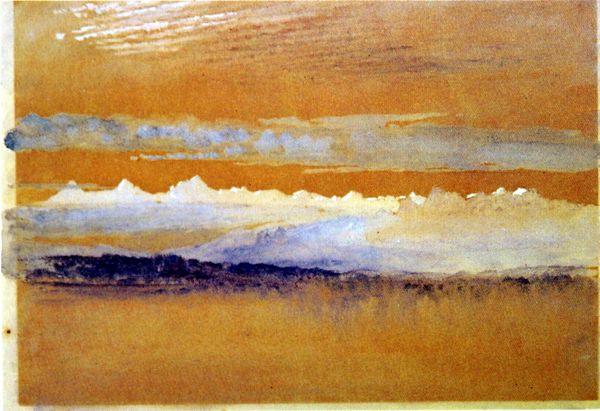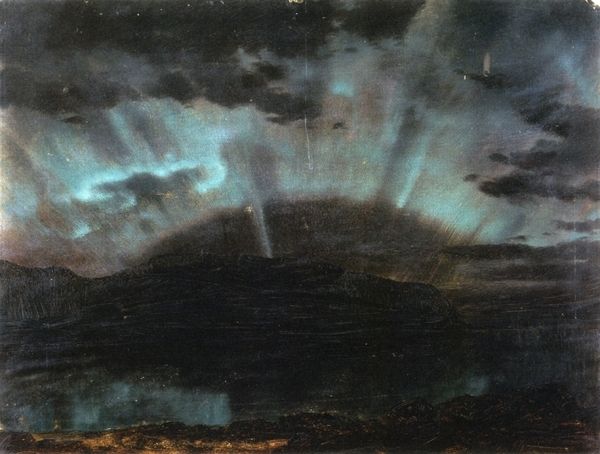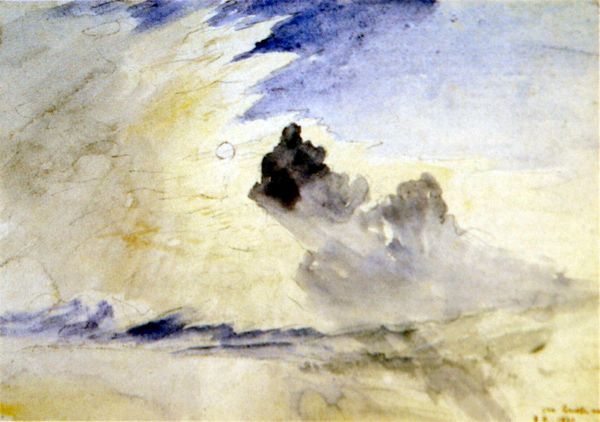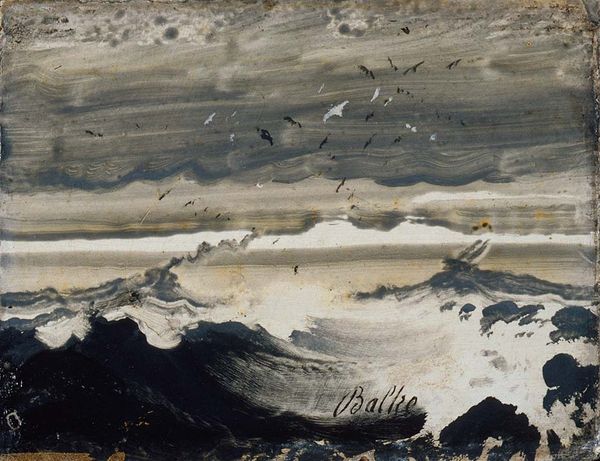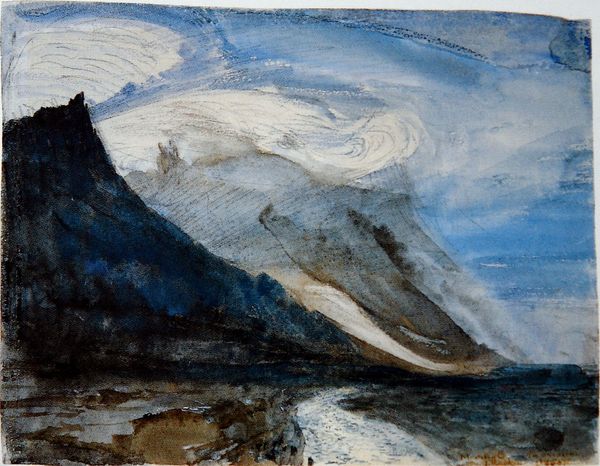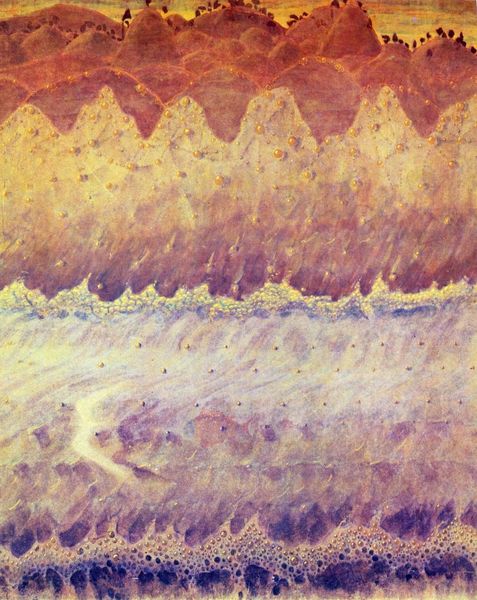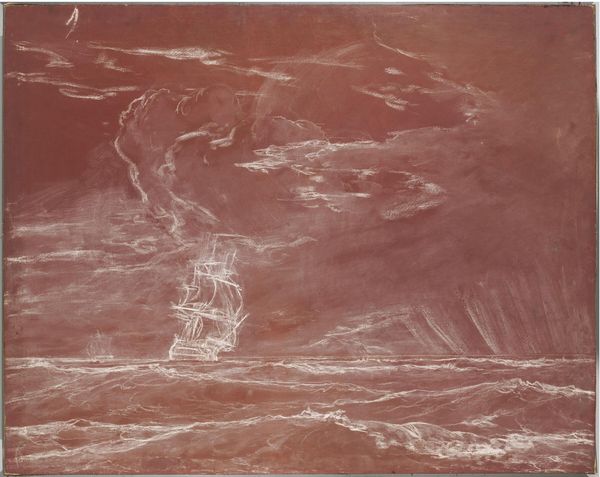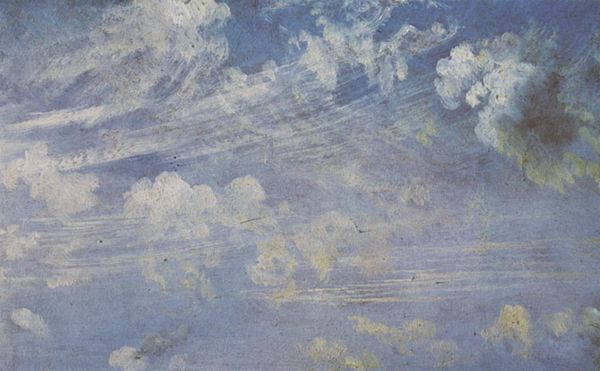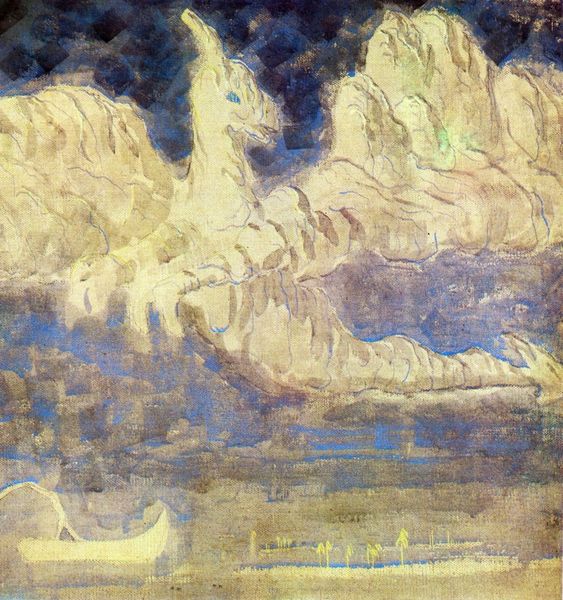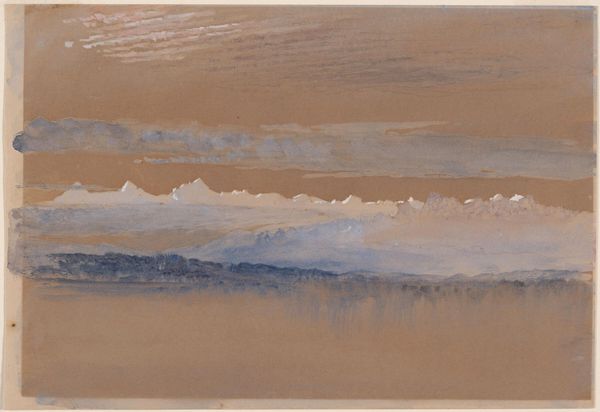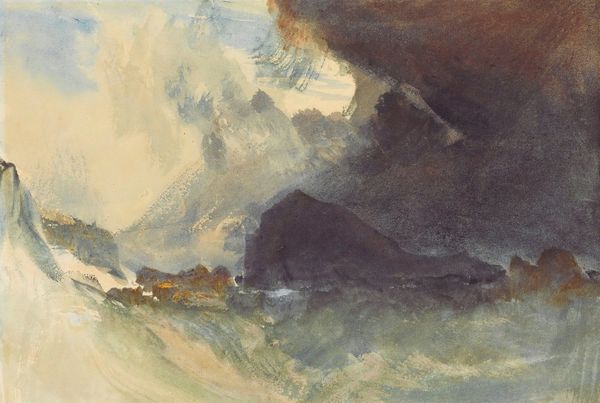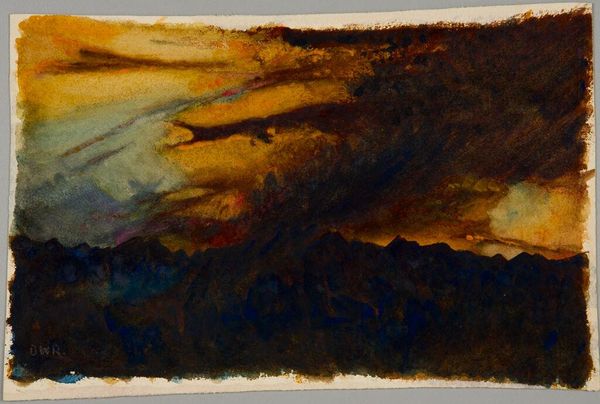
Copyright: Public domain
Curator: Well, this watercolor study by John Ruskin, titled "Ice Clouds over Coniston Old Man," from 1880 certainly evokes a particular mood. There's a distinct ethereal quality about it, don't you think? Editor: Yes, an undeniable sense of foreboding, actually. The heavy blues of the landscape contrasting so sharply with the swirling whites and pale yellows of the clouds... it almost feels apocalyptic. Is it a particularly large work? Curator: Not at all, quite the opposite in fact. Its intimate scale really draws you in. But regarding that emotional pull, Ruskin was very invested in observing and recording natural phenomena, which became a deeply moral endeavor for him. Editor: Of course. We're viewing this piece, painted en plein-air no less, over a century after its creation. I immediately consider the relationship between the Romantics, with their focus on nature’s sublimity, and later artistic movements like Impressionism. Curator: It’s a good point! We can certainly see both aesthetic leanings. But I think Ruskin adds another dimension, the desire to understand what those clouds represent, and to somehow capture them and communicate their impact. To almost possess that feeling... Editor: Possession seems apt given his personal struggles and cultural position as a Victorian art critic. I can imagine the societal pressure and institutional expectation for art to perform a moralizing function weighing on his interpretation of these atmospheric studies. Curator: Definitely, and cloud formations themselves carried significant weight at that time. The Industrial Revolution was underway, and concerns about pollution and climate change, though not articulated as such, were beginning to surface. Editor: So this isn't merely a detached study of ice clouds over a mountain, but possibly a loaded, subtle commentary? A symbolic representation of impending changes? Curator: It very well could be. These clouds, almost frozen in place, speak to the larger concerns percolating within the culture. As with much of his work, the objective beauty also hides the fear. Editor: Precisely, and thank you. Looking at "Ice Clouds over Coniston Old Man," I see a historical reflection on how anxiety and a pursuit of aesthetics became inextricably entwined. Curator: Indeed. For me, it is an evocative reminder that images often hold far more meaning than what initially meets the eye.
Comments
No comments
Be the first to comment and join the conversation on the ultimate creative platform.
